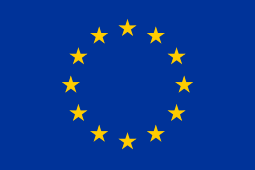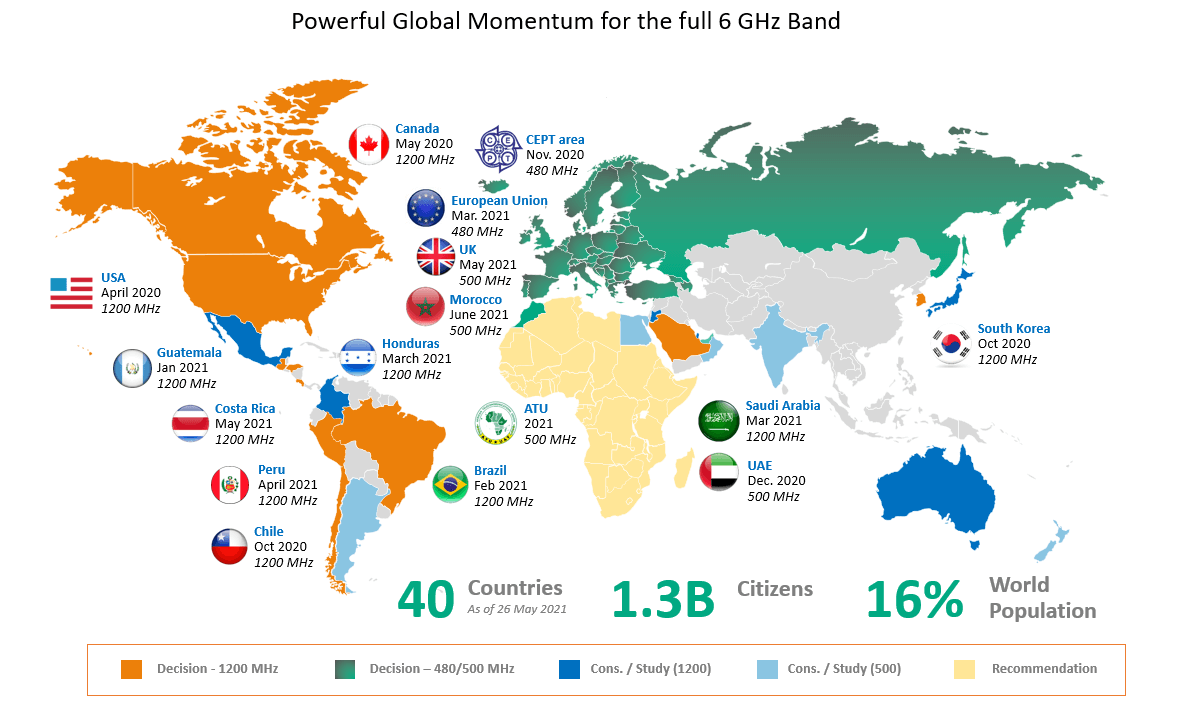
Wi-Fi 6E arrives in the EU

With the publication of Implementing Decision C(2021) 4240 in the Official Journal of the European Union (OJEU), the European Commission has today released an additional 480 MHz of spectrum in the 6 GHz band for Wi-Fi[1]. EU Member States now have until 1 December 2021 to transpose the decision into national law.
This decision is a milestone for the European Union as it almost doubles the total amount of spectrum available for Wi-Fi, paving the way for new and improved broadband applications and services that will benefit 448 million citizens and 25 million businesses in the EU-27 group of countries.
The power of Wi-Fi in the EU
With over 13 billion devices operating worldwide, Wi-Fi has become an essential part of Europeans' daily lives. On average, every European owns and uses many Wi-Fi devices. Over the past 20 years, Wi-Fi has evolved from a wireless networking technology used by a few to the most widely used wireless broadband technology in the world. It is estimated that the economic value generated by Wi-Fi for the European Union in 2025 will reach USD 637 billion (EUR 534 billion)[2].
The importance of Wi-Fi to society was impressively demonstrated during the COVID-19 crisis. The pandemic has dramatically increased the demand for Wi-Fi connectivity due to the extensive use of telecommuting, remote learning/homeschooling, entertainment and online commerce. A recent study indicates that the demand for Wi-Fi connectivity has grown at an unprecedented rate, especially in terms of Wi-Fi data usage and the number of actively used devices[3]. The critical importance of broadband connectivity in supporting the EU's recovery from COVID-19 was also identified by the European Commission in its State of the Union Communication
DThe EC decision is the first step
This EC decision is an important first step towards a European gigabit society. However, in order to achieve this goal, and especially the recently formulated goals of the European Digital Decade 2030, additional spectrum for Wi-Fi will be needed.
The volume of wireless data traffic is projected to increase significantly in the coming years, driven by new applications that require very high data rates, such as AR/VR, but also by improvements to current applications, such as high-density deployments in large public facilities.
As with previous generations of cellular communications (3G, 4G), the availability of high-speed Wi-Fi will be essential to launch 5G by providing bandwidth that will be urgently needed, especially in indoor environments. Europeans spend more than 90% of their day indoors, therefore more than 90% of traffic is and will be generated and consumed indoors[5]. The share of total mobile traffic over Wi-Fi is expected to increase from 59% for 4G to 71% for 5G[6].
Recognizing these changes, more and more countries around the world have decided to allocate an additional 1200MHz of spectrum to Wi-Fi, which is the entire 5925-7125MHz band, others are in the process of doing so. (See global map below).

1200 MHz of contiguous spectrum accommodate up to seven non-overlapping 160 MHz-wide channels which will enable Wi-Fi 6E to deliver maximum performance in dense deployment conditions. They will also support three non-overlapping 320 MHz-wide channels which will be featured by IEEE 802.11be (the future Wi-Fi 7). With just 480/500 MHz of spectrum, only one such channel can be realized.
In view of the ambitious targets of the European Digital Transformation and in the interest of global harmonization of the 6 GHz band for license-exempt use, the European Commission and national administrations should initiate the next step and evaluate the potential for WAS/RLAN operation in the 6425-7125 MHz band in a timely manner.
Sharing the 6GHz band
The 6 GHz band is currently used by a number of systems, including Fixed Wireless (FS) and Fixed Satellite Services (FSS), some of which require high levels of availability and reliability, as well as low latencies. Others are considered critical infrastructure. To share this band, a new entrant must comply with stringent protection requirements.
Unlike cellular technologies such as IMT 4G and 5G, Wi-Fi was designed to share spectrum with other users, and extensive studies conducted by the European Electronic Communications Committee (ECC) have shown that Wi-Fi can share the lower 6 GHz band with the incumbent services.
The incumbent services in the 6425-7125 MHz band are essentially the same as in the lower 6 GHz band, with the exception of Mobile Satellite Service (MSS) Earth Stations. Hence, it is expected that Wi-Fi could coexist with these incumbents under very much the same conditions as in the lower 6 GHz band. Of course, this would have to be validated through technical studies to be conducted by the ECC.
Considering that the 2023 World Radio Conference (WRC-23) will decide over a potential identification of the upper 6 GHz band for IMT in ITU Region 1 (Europe, Middle East, and Africa) and that IMT coexistence studies are in progress, understanding the various technical and regulatory options will be essential for European administrations to be able to make an informed decision about the best possible future use of the upper 6 GHz band in Europe.
European harmonization for 6GHz
A growing number of European administrations recognize the importance of WAS/RLAN coexistence studies operating in the 6425-7125 MHz band. At the recent Global Summit of the Dynamic Spectrum Alliance, the Czech Telecommunications Authority (ČTÚ) expressed its support for such research and wider European harmonisation, and Germany's Bundesnetzagentur (BNetzA) encouraged the RLAN industry to actively support additional research.
HPE congratulates the European Commission on this landmark decision to open the 5925-6425 MHz band to license-free services, including Wi-Fi. We look forward to continuing to work with policy makers and regulators in Europe as they explore the best use of the 6425-7125 MHz band for European citizens and businesses, and we are confident that this analysis will ultimately demonstrate that license-free services can quickly and effectively leverage it's spectrum for heavy use while protecting current operations.
